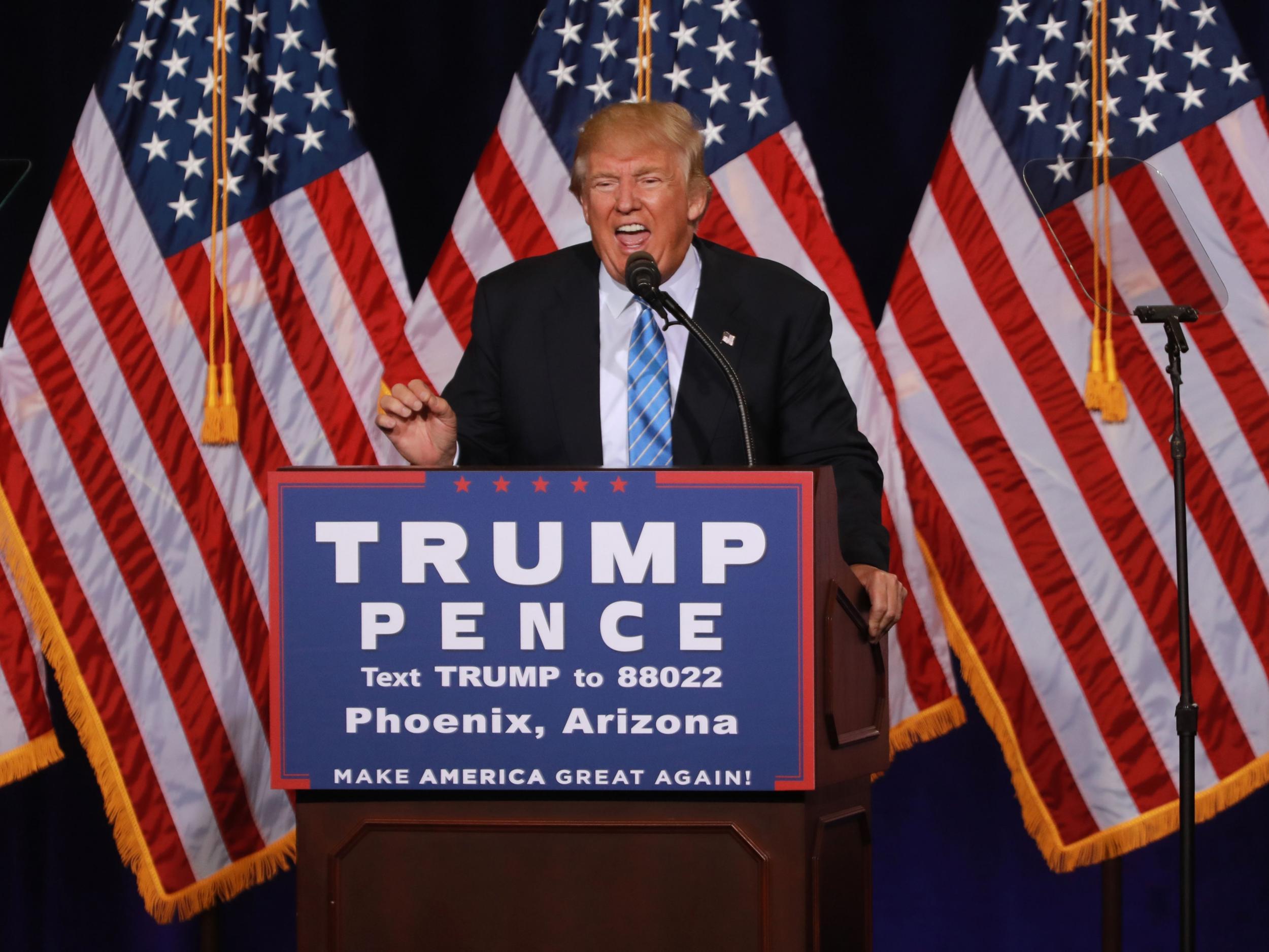The Independent's journalism is supported by our readers. When you purchase through links on our site, we may earn commission.
To understand how Donald Trump could win the US election, you need to know about his two very different advisers
Rather than settling on one guru, Trump’s latest strategies tend to reflect the thoughts and ideas of the last person with whom he spoke. But it's time for him to make a choice – will he go with the strategy put forward by a hard-charging CEO or his campaign manager?

Donald Trump is neither a statesman nor an everyman. He’s a political schizophrenic.
Anyone who doubts this need only look back to Wednesday (August 31, 2016) as a microcosm of his mercurial campaign. It was a tale of two Trumps: one, the aspiring statesman, and the other, the demagogic hero of the American workingman.
It started in Mexico, where Trump met with President Enrique Peña Nieto. He shrewdly positioned himself next to a foreign head of state, as if the president’s power and status were contagious. If the goal was to make him look statesmanlike and diplomatic, it worked.
But it wasn’t just the optics. Rhetorically, Trump struck a conciliatory tone while talking about “shared goals.”
For a moment, at least, it appeared that he might have outflanked Hillary Clinton.
Then he crossed the border into Arizona.
Trump immediately reverted to his hard-line message, hurling red meat to his adoring fans. He recommitted to mass deportations (even mentioning a new “deportation task force”) and suggested an elaborate vetting process for immigrants. “We will build a great wall along the southern border, and Mexico will pay for the wall,” he boasted, not for the first time
There’s nothing inherently wrong with a sovereign nation wanting to control its borders. But statesman Trump had disappeared, only to be replaced by a populist rabble rouser. He even joked that Hillary Clinton might be deported. It was almost as if there were two Donald Trumps. South of the border, he was civil and irenic—north of the border, he was a vulgarian.
But this isn’t just the story of an image torn asunder. Trump’s campaign team, like his campaign message, is a house divided against itself. His two top aides couldn’t be more different: Steve Bannon (the newly hired, hard-charging CEO of the campaign) has no campaign experience, and Kellyanne Conway (his campaign manager) is a veteran political operative who wants a kinder, gentler Trump.
Bannon comes from Breitbart.com, the right-wing website that has been instrumental in mainstreaming the unseemly “alt-right” movement. Picture him as the whisperer on Trump’s shoulder who reinforces his worst instincts.
Conway is a pollster by trade, and she understands data and realises Trump must perform better with women, minorities, and so on if he wants to have a prayer of winning in November. Picture her on the other shoulder. She’s whispering in his ear, “Remember the ladies.”
Speaking of ladies, scuttlebutt suggests that the ladies in Trump’s life (Conway and Trump’s daughter, Ivanka), along with ex-Fox News boss Roger Ailes (who had his own trouble with the ladies), are responsible for the recent instances when Trump has pivoted and softened his stance on issues such as immigration.
So who’s right? Angel or devil?
There are basically two theories on how Trump can win this campaign. One suggests you should just “Let Trump be Trump.” After all, he has managed to defy the odds thus far by following his own instincts. Maybe his minions should double down on recruiting the support of working-class white men. Perhaps the polls are wrong, and there is an appetite in America that rivals what happened during the Brexit vote. Most strategists would advise against this, but if Trump loses, he might sleep better knowing he ran the campaign his way and didn’t compromise or water down his message.
The competing theory insists Trump simply cannot win if he continues to alienate women and minorities. People who espouse this view realise that Trump can’t suddenly abandon his core beliefs, but, they insist, he must be more eloquent and disciplined in how he presents his ideas. They argue that Trump must maintain his support with the Republican base but present his positions in a more eloquent and palatable manner.
Both of these philosophies are defensible. But a choice must be made. What does not work is oscillating between the two. And that’s just what he’s doing.
Rather than settling on one guru or Sherpa, Trump’s latest strategies tend to reflect the thoughts and ideas of the last person with whom he spoke. Rather than settling on one theory of winning and then ruthlessly adhering to it, the strategy instead is ad hoc and reactive.
The frightening thing for voters is that it’s impossible to tell who Trump is, what he really believes, and whether he would listen to the angel or the devil on his shoulder in the Oval Office. What it all ends up looking like is that he is a nihilist who lacks a coherent worldview, much less a consistent strategy.
Sometimes it’s not so much what you decide but that you decide on something. You’ve got to decide who you are and what you believe, and then you must stick by it—come hell or high water. Success, honour, and loyalty require making commitments, and (for better or for worse) sticking to them.
F Scott Fitzgerald once, in vain, warned Ernest Hemingway that “a man, torn between two women, will eventually lose them both.”
A man torn between two messages has the same problem. Trump must make his choice.


Join our commenting forum
Join thought-provoking conversations, follow other Independent readers and see their replies